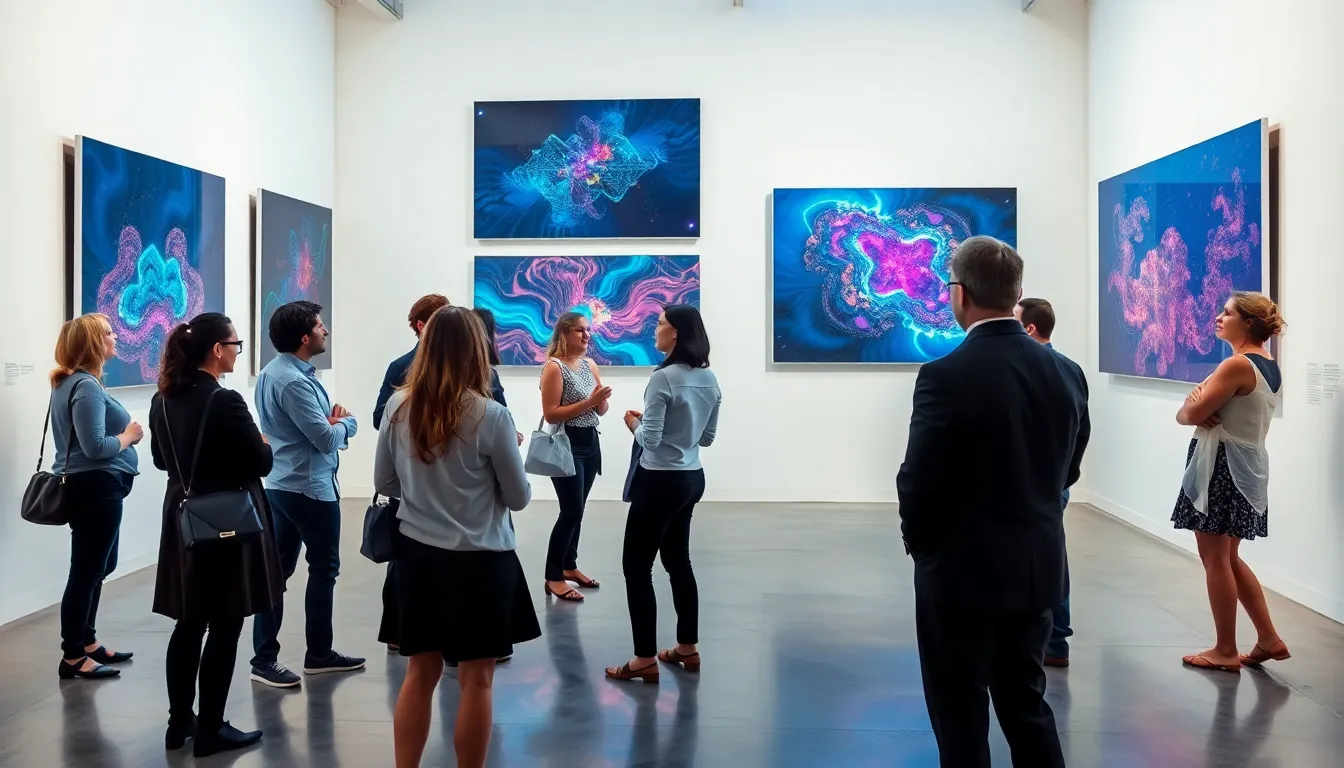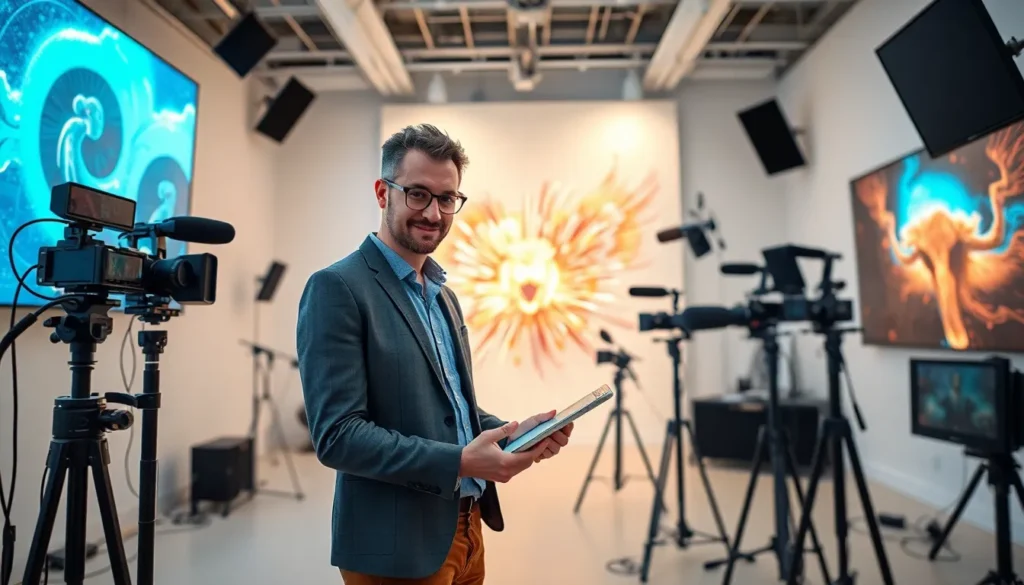When you think about arts, do you picture paintbrushes and canvases? Or maybe you envision the latest audio gear? In today’s world, arts and technology are like peanut butter and jelly, each complements the other in deliciously unexpected ways. The intersection of these fields is not just a backdrop: it’s the stage upon which modern creativity unfolds. Join us as we explore how audio/video technology and communications are revolutionizing artistic expression, leaving no creative stone unturned (or brush stroke unmade.).
Table of Contents
ToggleThe Interconnection of Arts and Technology

The fusion of arts and technology is not just a trend: it’s a transformative force that shapes modern creativity. Artists today wield a variety of technological tools to enhance their work, pushing boundaries far beyond traditional methods. From digital painting software to virtual reality experiences, technology enriches artistic processes and expands creative horizons. Notably, artists are increasingly embracing new mediums. For instance, generative art combines creativity with programming, resulting in fascinating visuals that are as unique as the algorithms that create them.
Also, technology allows for interactive art installations that engage audiences in ways that static pieces never could. Imagine walking into a gallery where your movements influence the artwork. This interactivity blurs the lines between artist and observer, creating a shared space for experience and interpretation. Clearly, the interplay between creativity and technology is not only inevitable but essential in our evolving artistic landscape.
The Role of Audio/Video Technology in Creative Expression
Audio and video technology play pivotal roles in how stories are told today. These mediums have transformed the way artists communicate, allowing them to create immersive experiences that convey emotion and narrative depth. For instance, music videos are no longer just a backdrop for songs: they are complex art forms that fuse sound, image, and storytelling.
Take filmmakers, for example, cameras, drones, and editing software have democratized cinema. Aspiring directors can create blockbuster-style films from their living rooms, thanks to affordable technology. Even indie artists harness the power of social media platforms for distribution, enabling their work to reach a global audience without the need for a massive budget. Clearly, the synergy between technology and creative expression not only enhances artistic capabilities but also opens doors for diverse voices to share their stories.
Key Innovations in Communication Technologies
In the realm of communication, innovations have dramatically shifted how we share and consume artistic content. Platforms such as social media have not only facilitated engagement but also transformed marketing strategies for artists. They allow creators to connect directly with their audience, turning fans into advocates.
Besides, tools like video conferencing have made collaboration easier than ever. Artists in different countries can come together to co-create in real time, ensuring that geography is no longer a barrier. The rise of cloud-based storage and sharing platforms means creators can work from anywhere, exchanging files and feedback instantaneously.
Also, technologies such as augmented reality (AR) and virtual reality (VR) are revolutionizing the way audiences engage with art. AR allows viewers to interact with art pieces digitally, while VR immerses them in entirely new worlds. These innovations keep communication fresh, fascinating, and ever-evolving.
Impact on the Arts Industry
The arts industry is experiencing a seismic shift, largely due to the integration of technology. Traditional models of production and distribution are being disrupted. Artists are no longer reliant on galleries or record labels to showcase their work. Instead, they can self-publish online, reaching audiences directly.
This newfound autonomy empowers artists and fosters a diverse ecosystem where various voices can thrive. With crowdfunding platforms, creators can secure funding directly from supporters, bypassing traditional gatekeepers. The result? An explosion of creativity that mirrors the rich tapestry of voices in society.
Also, the democratization of technology has led to both excitement and challenges. While it offers incredible opportunities for many, it also raises questions about accessibility and the sustainability of digital art. As more creators enter the field, how can they ensure their work is seen and valued?
Future Trends in Arts and Technology
Looking ahead, the relationship between arts and technology will continue to evolve in thrilling ways. For starters, artificial intelligence (AI) is set to play a larger role in creative fields. Imagine AI systems that help artists generate new ideas or provide assistance in the editing process. While some may see this as stifling creativity, others argue it will free artists to focus on their unique visions.
Also, immersive technologies such as haptic feedback devices promise to create a multisensory experience that further engages audiences. These advancements could redefine what art means, transforming it from a visual experience to something that engages all five senses.
Also, sustainability is becoming an essential consideration. As artists grapple with the environmental impact of their practices, eco-friendly technologies and materials are gaining traction. This trend reflects a broader societal shift towards sustainable practices, indicating that the future of art may prioritize both innovation and environmental stewardship.
Education and Skills for Tomorrow’s Creatives
As technology continues to shape the arts, educational institutions must adapt accordingly. Traditional art programs are shifting to include courses that teach digital skills, coding, and the use of advanced technology in creativity. This is not just about teaching the tools of the trade: it’s about preparing students to think critically and adaptively in a rapidly changing landscape.
Collaboration and interdisciplinary learning will also be essential. Future artists will benefit from exposure to fields such as computer science, engineering, and design. By merging these disciplines, they can develop innovative solutions and ideas that reflect the complexities of modern life.
Besides, mentorship programs that connect emerging artists with experienced professionals in the field will be crucial. These connections encourage knowledge sharing and help foster an inclusive and vibrant arts community.

